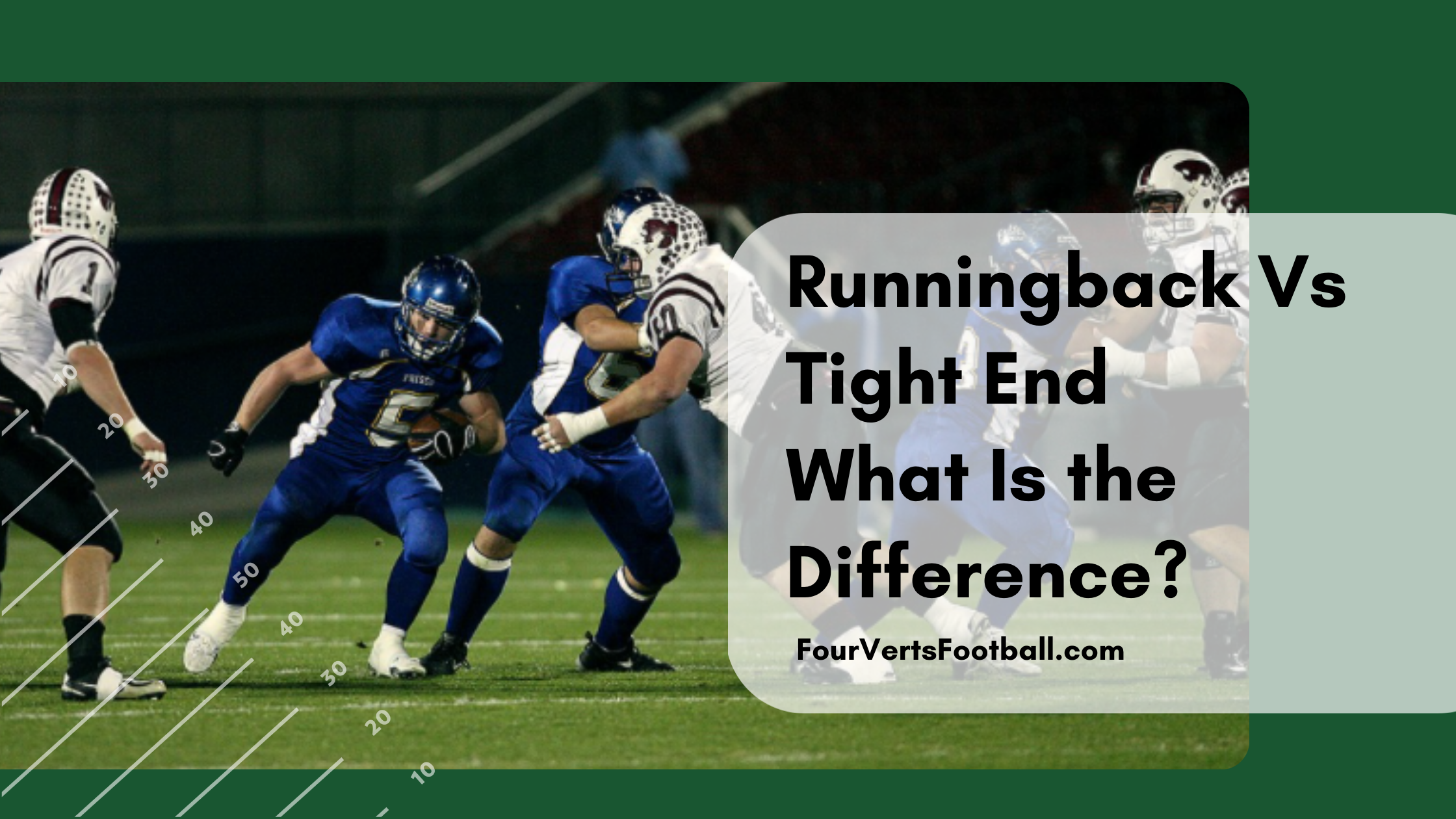The game of football has a massive number of positions between offense, defense, and special teams. Understanding all these positions can be difficult, one question often asked is what is the difference between tight end and running back.
The key difference between the tight end and running back positions is that running backs are primarily handed the ball to run with it. While tight ends are used to catch passes and block defenders when a teammate has the ball.
For a similar comparison to running back and tight end see our guide to slot receiver versus wide receivers.
Running Plays
When it comes to running plays tight ends and running backs are going to have very different assignments.
On running plays the running back is going to be the player that is handed the ball to start the play. On these rushing plays the ball carrier find a way to get down the field once the ball is in his hands.
Running backs line up directly behind or beside the quarterback which makes it easy to hand them the ball right after the play starts.
Tight ends on the other hand are given the assignment of blocking on running plays. Tight ends usually line up at the end of the formation beside the offensive tackle.
Due to their location, this means they are usually responsible for blocking linebackers and defensive ends. This is quite a difficult task for a player which is why the tight end position puts so much importance on blocking.
On most running plays the running back will be instructed to run to the side of the field with the tight end. This is because having the tight end gives you an extra blocker on that side of the field.
This extra blocker makes it much easier for the running back to find a hole in the defense.
Passing Plays
On passing plays both tight ends and running backs have the ability to catch the ball. Tight ends are closer to wide receivers in this department as they run a large number of routes to almost any location on the field.
Running backs on the other hand run routes but they tend to be short in order to stay in close proximity to the quarterback.
Additionally running backs will often stay near the quarterback in order to block for them on passing plays. If the defense is going to send a blitz at the quarterback the running back can be used as an extra blocker.
The running back will usually wait to see which defender managers to get past the offensive line and then begin to block them. This is not a huge part of a running backs game but it can be relevant, especially on third down.
Build
When it comes to the build of these positions running backs and tight ends are very different.
Tight ends are going to be noticeably taller than running backs. Tight ends need to be big for two reasons. First off being taller and having a larger wingspan is going to make you more effective at catching the ball.
The second reason that tight ends have a much larger build is due to blocking responsibilities.
As we stated earlier in the article tight ends are going to have to block some of the strongest players on the defense in linebackers and defensive ends.
In order to do this, they are going to need to play at a heavy enough weight that they won’t get pushed around.
This forces them to sacrifice some speed but many talented tight ends are able to retain their speed despite their larger frames.
Running backs on the other hand tend to be shorter in order to maintain a low center of gravity and agility.
Their lightweight and size allow them to move quickly and change directions at a moment’s notice. These are all key features for ball carriers when they are looking to avoid defenders.
Though these running backs are quite stalky compared to the normal person you will notice they are often 20-40 pounds lighter in weight than most tight ends.
That’s all on running backs versus wide receivers, our articles on offensive guards vs offensive tackles or the halfback position vs the fullback position in football.

